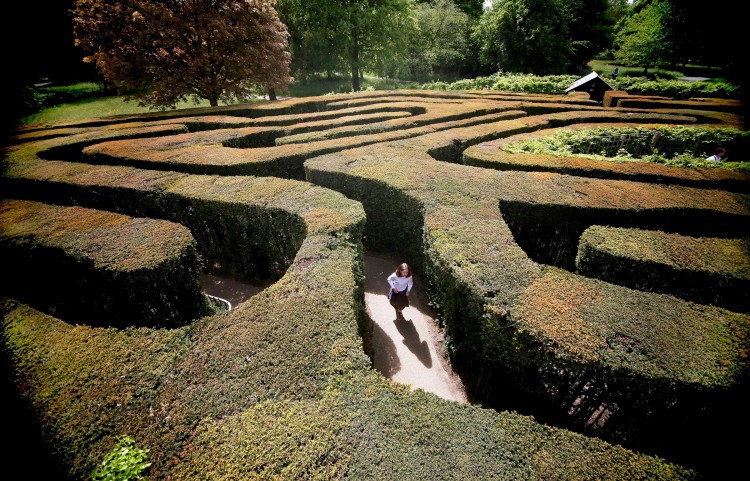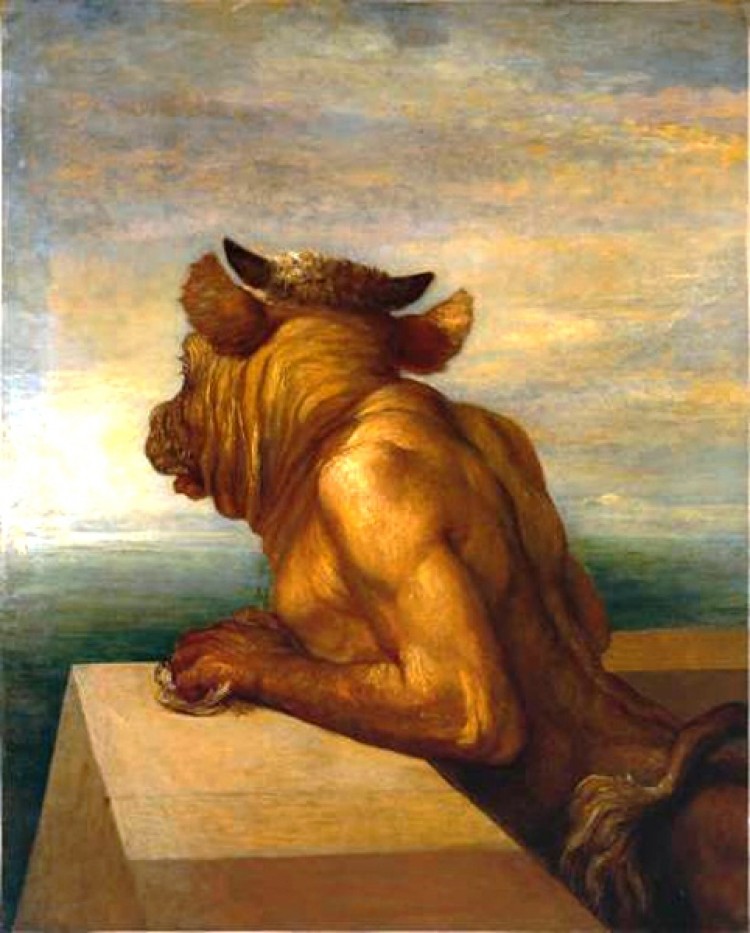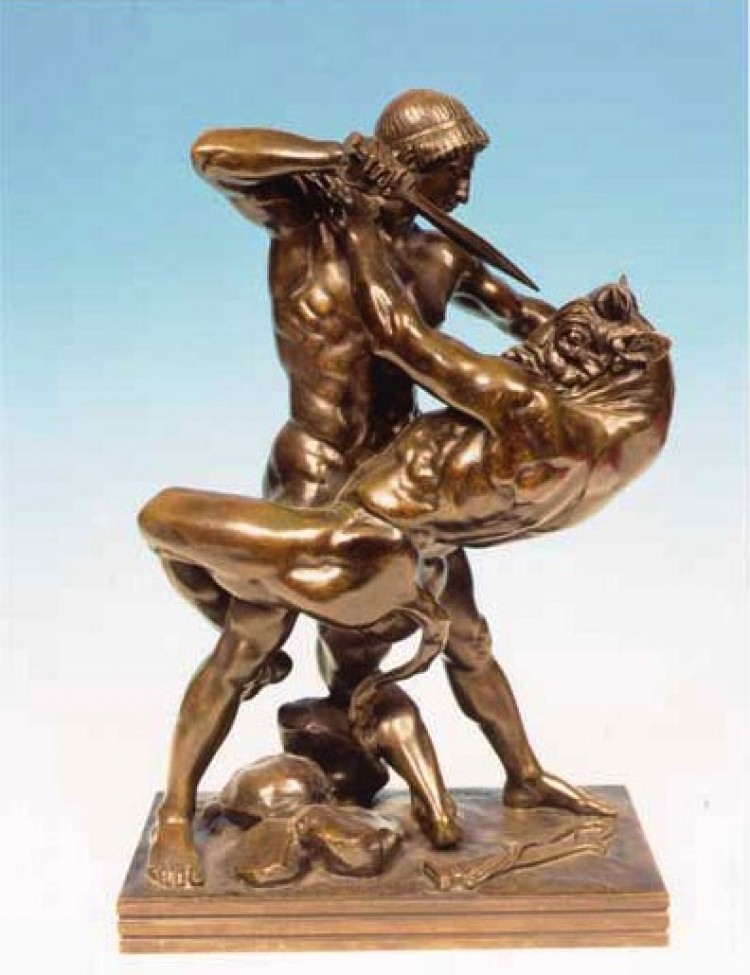A labyrinth is a technical structure without symmetry, which aims to have the most possible narrow corridors and dead ends in order to slow down or not allow the searcher to find the center of it.
The word “labyrinth” is Greek and means “the house of the double-sided axe” when translated to English.
According to ancient Greek mythology, a famous labyrinth existed on the Greek island of Crete. At that time, the king of Crete was Minos. His second son was Minotaur, a creature that looked half like a bull and half like a man. The king’s daughter was Ariadne.
It is believed that Minos’s kingdom was this labyrinth, and somewhere within it was the place where Minotaur lived.
At that time, Athens owed Minos and had to pay him seven boys and seven girls every nine years in order to feed his son Minotaur. This was because the king of Crete helped Athens in a war in which Minos’s first son was killed.
Minos made the Athenians responsible for his son’s death and therefore demanded that Athens pay such a bloody tribute.
At this time, a young man Theseus came to Athens to find his real father, who had left him when he was a boy. Theseus’s father had said to Theseus’s mother that Theseus should go and find him after growing up. Following his father’s wish and on the way to Athens, Theseus killed six of the worst murderers in Greece.
Theseus finally arrived in Athens. After hearing about the tribute that Athens had to pay to Minos, he felt it was his responsibility to free the Athenians and all the youngsters who would have to pay this bloody tribute in the future.
Theseus went to Crete and into the labyrinth in order to find the center and kill the Minotaur. Ariadne, King Minos’s daughter, was a determining factor in the success of his undertaking. Before he entered the labyrinth, she told him how to get out of there once he killed the monster.
Ariadne gave him a double-sided axe, also called pelekis, and a ball of red fleece thread that she was spinning. Marking his path with the red thread would help him find his way out of the Minotaur’s labyrinth if he succeeded in killing the monster.
Minos made the Athenians responsible for his son’s death and therefore demanded that Athens pay such a bloody tribute.
At this time, a young man Theseus came to Athens to find his real father, who had left him when he was a boy. Theseus’s father had said to Theseus’s mother that Theseus should go and find him after growing up. Following his father’s wish and on the way to Athens, Theseus killed six of the worst murderers in Greece.
Theseus finally arrived in Athens. After hearing about the tribute that Athens had to pay to Minos, he felt it was his responsibility to free the Athenians and all the youngsters who would have to pay this bloody tribute in the future.
Theseus went to Crete and into the labyrinth in order to find the center and kill the Minotaur. Ariadne, King Minos’s daughter, was a determining factor in the success of his undertaking. Before he entered the labyrinth, she told him how to get out of there once he killed the monster.
Ariadne gave him a double-sided axe, also called pelekis, and a ball of red fleece thread that she was spinning. Marking his path with the red thread would help him find his way out of the Minotaur’s labyrinth if he succeeded in killing the monster.
Theseus indeed found the Minotaur in the center and killed it with the pelekis, the double-sided axe, a religious and political symbol of Crete.
Mythology and Greek mysteries complement each other, aiming at giving a message to the common people through stories. As we know, the aim of the Greek mysteries was for a person to purify one’s self in order to reach higher abilities, higher realms of knowledge, as well as higher standards.
According to the Greek mysteries, in the myth of the Minotaur, Theseus symbolizes an altruistic person who puts his life in danger for others. The Minotaur symbolizes a person’s ego. The six murderers stand for individual weaknesses, which need to be killed in order to resolve the toughest and most difficult task, which is to kill one’s ego.
Ariadne in Greek means “very pure.” Her red fleece thread symbolizes the help of a very pure spirit. Such help will be given to a person who is determined by choice to face the self, kill weaknesses, and purify the soul by pursuing an altruistic goal.
In Theseus’s case, this selfless goal was to save the seven boys and the seven girls from death and to save many boys and girls who would have faced the same fate in the future. As Theseus accomplished his mission, his ego—symbolized by the Minotaur—was killed and transformed into virtue.
Theseus’s mistakes and weaknesses were transformed through hardship into great accomplishments.
Anyone can get into the labyrinth of the soul and by one’s own choice get out of it as a winner.
Mythology and Greek mysteries complement each other, aiming at giving a message to the common people through stories. As we know, the aim of the Greek mysteries was for a person to purify one’s self in order to reach higher abilities, higher realms of knowledge, as well as higher standards.
According to the Greek mysteries, in the myth of the Minotaur, Theseus symbolizes an altruistic person who puts his life in danger for others. The Minotaur symbolizes a person’s ego. The six murderers stand for individual weaknesses, which need to be killed in order to resolve the toughest and most difficult task, which is to kill one’s ego.
Ariadne in Greek means “very pure.” Her red fleece thread symbolizes the help of a very pure spirit. Such help will be given to a person who is determined by choice to face the self, kill weaknesses, and purify the soul by pursuing an altruistic goal.
In Theseus’s case, this selfless goal was to save the seven boys and the seven girls from death and to save many boys and girls who would have faced the same fate in the future. As Theseus accomplished his mission, his ego—symbolized by the Minotaur—was killed and transformed into virtue.
Theseus’s mistakes and weaknesses were transformed through hardship into great accomplishments.
Anyone can get into the labyrinth of the soul and by one’s own choice get out of it as a winner.










